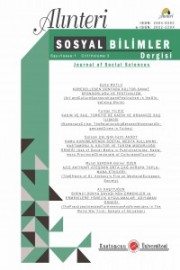AZİZ ANTHONY ATEŞİNİN ORTA ÇAĞ AVRUPA
TOPLUMUNA ETKİLERİ
The Effects of St. Anthony's Fire on Medieval European
Society
Author(s): Murat Serdar, Gülnur ÖzerSubject(s): Economic history, Middle Ages, Health and medicine and law
Published by: Kastamonu Üniversitesi
Keywords: St Anthony's Fire; Epidemic; Middle Ages; Europe; Ergotism;
Summary/Abstract: The land, which is the most important source of nutrition of the people since ancient times, has facilitated the lives of human beings and could also cause deaths with serious diseases. The climatic changes caused to the scarcity of some animal species and damaged some plants and consequently lead to the deterioration of the ecological balance. This famine brought with them epidemic diseases, and thousands of people were dying of them. As in many parts of the world, scarcity has also made itself felt in Europe from time to time. In addition to the famine, abundant consumption of some cereal products could trigger diseases that were difficult to treat. Deaths due to this cause are frequently encountered in the Middle East, Europe, especially in Northern Europe after the production of rye, which is common with Christianity. This disease, which called by medical scientists as ergotism, and commonly used by the public as St. Anthony's Fever, was the result of the ingestion of rye bread contaminated with rye, which resulted in gangrene of the limbs, dysfunction of the central nervous system, and ultimately death.
Journal: Alınteri Sosyal Bilimler Dergisi
- Issue Year: 3/2019
- Issue No: 1
- Page Range: 67-76
- Page Count: 10
- Language: Turkish

